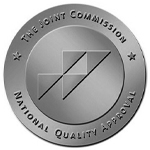
When people hear of a sprained ankle, they often don’t consider it a serious injury. However, if left untreated, long-term damage can occur. Dr. David Pagnanelli Jr., a board-certified podiatric surgeon at Keystone Foot And Ankle Center, explains why it’s important to seek medical care for sprains, even if you aren’t in severe pain.
What are the most common causes of a sprained ankle?
When we think of a sprained ankle, we think of when you hyper invert, or roll, your ankle inward, stretching the outside ligaments that are holding your joint together. Although you can sprain the inside of your ankle, the outside is most common. Typically, people step on an uneven surface, have a sudden twist or fall, or even wear non-controlled high heeled shoes when they sprain their ankle. Sometimes sprains can come from previous ankle or foot injuries that have weakened the ankle ligaments. Your ankle ligaments are made up of Type I collagen and act like rubber bands to keep your joint in place but allow some motion. Anyone can be subject to an ankle sprain.
What are the symptoms?
Symptoms of a sprained ankle may include pain or soreness near the outside ankle bone (fibula), swelling, bruising in and around the ankle joint, laxity or looseness of the ankle joint and difficulty walking. A person’s symptoms may vary depending on the severity of the sprain and how long they’ve had it. Things that also can change the symptoms are if it is the first sprain or one of many in a lifetime.
How can you tell the difference between a sprain and a tear or rupture?
There are certain tests we can do in the office that allow us to test the competency and structure of the ligaments to see if they are torn or ruptured. Depending on age and activity level, a tear or a rupture is often a surgical fix.
When should you seek medical care?
Treatment is critical; even with no pain or swelling, seek medical attention. If the ligaments are torn or weakened, without medical attention and proper treatment, you can be left with laxity at the ankle which will result in future sprains and possible broken bones and need for surgery. The sooner you’re seen for your sprain, the faster you will heal and avoid long-term effects.
What are the treatments?
For mild, moderate and some severe sprains, we treat conservatively with rest, ice, compression, elevation and bracing. We combine that with early physical therapy whether at home or at a physical therapist office. For severe and some moderate sprains, we add prescription NSAIDS (Non-Steroidal Anti-Inflammatory Drugs).
When is surgery needed?
If the patient is young and athletic and has a severe sprain, they may require surgery to recover well enough to play sports or be active. If a ligament is severely torn or ruptured, surgery is typically required. For people who fail conservative care, or have chronic sprains with laxity, we usually obtain an MRI to get a better look at the ligaments. If there are signs of chronic tearing or a ruptured ligament, then surgery is required to fix it.
Surgery to repair and/or replace the lateral ankle ligaments requires a small 2-centimeter incision on the lateral ankle. I use the Broström technique combined with the Internal Brace system, which is the latest and most advanced technique and system out today and is used in all professional athlete surgeries.
Recovery is about two to three weeks of non-weightbearing, followed by physical therapy. Younger patients return to sports by week four, but some older patients may take an extra week or two.
If you are experiencing any type of foot or ankle pain, don’t delay care. The sooner you are treated, the better chance you have to avoid long-term problems.
Keystone Foot and Ankle Center is accepting new patients for both our Chambersburg and Waynesboro locations! Click here to learn more.
This article contains general information only and should not be used as a substitute for professional diagnosis, treatment or care by a qualified health care provider.




